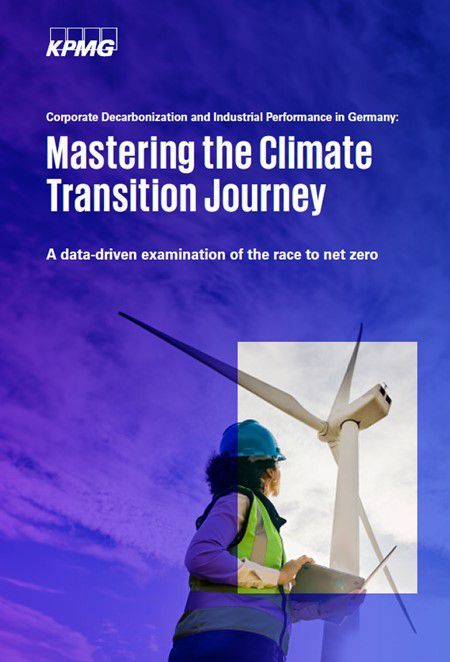The energy industry in Germany is changing fundamentally - and at a rapid pace. For industrial companies, this means increasing complexity, growing risk and increasing pressure to act. Electricity markets have become more unpredictable due to the strong expansion of volatile generators such as photovoltaics and wind power. The result: fluctuating prices, negative electricity prices during peak hours and reduced planning security. At the same time, politicians are demanding ambitious system and decarbonisation targets that companies should - and must - support.
In this environment, it is clear that energy is no longer just an operating cost factor, but a strategic issue. Companies, especially those with energy-intensive processes, are required to rethink their role - as active market participants, not passive consumers.
What is currently slowing down energy-intensive companies
Many companies struggle with rigid energy procurement, a lack of market transparency and insufficient integration of their energy production with purchasing. There are often multi-year supply contracts with fixed prices and risk surcharges, without any connection to current market opportunities. Own PV systems or, in some cases, existing energy storage systems remain unutilised or poorly integrated. In addition, there is often a lack of trading expertise, for example in dealing with hedging transactions or tranche procurement.
This situation is exacerbated by regulatory uncertainties - such as the long-term structure of grid fees or the role of so-called customer systems. Access to a competitive energy supply threatens to become a bottleneck for many companies - usually without them realising it.
The solution: Setting up an internal energy company
One promising solution is to set up a company-owned energy unit - for example in the form of a centralised energy company. This takes on all strategic and operational energy tasks: from procurement and direct marketing to flexibility utilisation and energy management.
A. Increased efficiency and cost reduction
By bundling energy issues in a specialised unit, companies can
- optimise the economic use of their own generation plants,
- market flexibility potential profitably,
- actively participate in spot and intraday markets and,
- reduce their energy costs in the medium to long term.
Keywan Ghane
Partner, Performance & Strategy
KPMG AG Wirtschaftsprüfungsgesellschaft
Dr. Thomas Künzel
Senior Manager, Performance & Strategy, Enterprise Performance
KPMG AG Wirtschaftsprüfungsgesellschaft
If you manage several locations together, you can benefit from economies of scale and coordinate energy use in the company more efficiently overall. Although investments in IT, expertise and governance are necessary, they quickly pay for themselves by reducing dependency on external suppliers.
B. Flexibility as a new business model
Modern energy companies are more than just cost optimisers - they are tapping into new sources of revenue. Battery storage, vehicle-to-grid concepts and power-to-X applications are turning companies into active players in the energy system. The energy company's own aggregator can utilise balancing energy and intraday markets in a targeted manner to generate additional income. This does not necessarily have to be done by the company's own trading desks, but can be efficiently and profitably outsourced to external service providers from a centralised energy unit for the first time.
In addition, strategically deployed storage facilities can decouple generation and consumption peaks - a real competitive advantage in a volatile market environment.
Advantages vs. challenges - a clear look at the options
Advantages
- Predictability and optimised energy procurement
- New sources of income through flexibility marketing
- Technological modernisation and infrastructure development
- Contribution to security of supply and system stability
Challenges
- Development of regulatory and IT expertise
- Dealing with market volatility and regulatory complexity
- Change management and internal governance
- The need for cultural transformation
Recommendations for action in practice
- Create a structure:
Start with a clear concept for establishing an internal energy company. Define interfaces to purchasing, IT, controlling and compliance. - Analyse potential:
Record the data of your existing and planned energy systems and storage facilities. Develop a technical and economic evaluation matrix. - Integrate technology:
Rely on centralised energy data management ("virtual power plant") and examine the possibility of automated market interfaces. Smart metering, battery storage and vehicle-to-grid must be intelligently networked with each other. - Actively utilise markets:
Examine co-operations with aggregators or gradually develop your own trading expertise. In this way, you can actively participate in balancing energy, intraday and spot markets. - Build up governance and expertise:
Embed energy in your KPI systems, build up internal knowledge and establish compliance and reporting structures.
Conclusion: Energy is becoming a strategic asset
The energy transition is not only a technological challenge, but also a strategic one. Companies that act on their own responsibility can not only minimise risks, but also actively shape opportunities.
Further insights into the global transformation of the energy economy:
The electricity economy – Electricity as the new driver of global competitiveness





